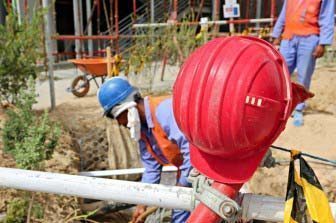
Construction of three hospitals for Qatar’s blue-collar expatriate workforce appear to have slipped further behind schedule, according to recent comments by a senior health official.
The state’s Supreme Council of Health plans to open three separate hospitals for what it calls “single, male laborers” in the Industrial Area, Mesaieed and Ras Laffan to better serve these expats and ease the strain on the country’s other health care facilities.
Speaking at a GCC conference on occupational health in Doha over the weekend, the SCH’s director of public health, Sheikh Mohammed bin Hamad Al Thani, suggested the deadline could be pushed into the new year, with the latest estimated opening for these hospitals “during 2016, or the beginning of 2017,” QNA reported.
This would make them nearly two years behind the SCH’s original schedule.
According to the organization’s 2012 annual report, the hospitals were due to launch in 2015. However, that timeline was looking unlikely by last summer.
Speaking last June, Public Health Minister Abdullah bin Khalid Al Qahtani said the hospitals were to be handed over by the end of this year and open to patients by early 2016, The Peninsula reported at the time.
However, the health council’s 2014 annual report, which was published in March, said the contractors would not hand over the hospitals until 2016.
Hospitals strained
Hundreds of thousands of male blue-collar workers come to Qatar from countries including Nepal, Bangladesh, Sri Lanka and India, and are generally housed in mass labor camps far outside the city center.

As the majority of the public health system’s medical centers are not open to non-Qataris, many of these low-income workers – who lack access to private health insurance – are forced to go to the emergency departments of state hospitals to seek attention for often minor health issues.
It is one of several pressures facing Qatar’s emergency departments, which are straining to cope with increased demand from patients.
In October last year, HMC Emergency Department director Dr. Peter Cameron told members of Qatar’s Central Municipal Council that many blue-collar expats used the ER for minor injuries or to receive treatment for chronic conditions such as hypertension or diabetes.

He urged for more clinics and GP-type surgeries to be constructed to help take the pressure off of the emergency department.
Purpose-built hospitals to meet the healthcare needs of blue-collar expats that are located near clusters of labor camps should help to address at least some of these issues.
In addition to the new hospitals, new health centers are also being planned for workers. According to the SCH’s 2014 annual report, two of these are slated for the new industrial area and one for Ras Laffan during 2016.
Other hospitals
Late delivery of major projects is not uncommon in Qatar. At the beginning of this year, the prime minister ordered HMC to finish construction and fully equip a handful of new hospitals within Hamad Bin Khalifa Medical City by the middle of this year.

The new, QR2.4 billion medical complex will feature a Women’s Hospital, Ambulatory & Minimally Invasive Surgical Hospital and a Physical Medicine & Rehabilitation Hospital, as well as a scientific center for medical research and a bio-bank.
However, just a few months later it looked like the deadline would slip.
Talking in March about HMC’s 15 year masterplan, managing director Dr. Hanan Al Kuwari said that construction on the project was “on track,” but once the building is complete would still need to be signed off by Civil Defense and other safety authorities.
As a result, the women’s hospital and ambulatory hospital are not expected to be operational until around mid-2016, she said.
Workplace injuries
The SCH, in co-operation with the executive board of the GCC Health Ministers’ Council, hosted last weekend’s meeting of the GCC committee for occupational health and safety. The session focused on reporting work injuries and occupational diseases.

One of the issues raised at the meeting was the need for Gulf states to set up official, national databases to register workplace injuries and occupational diseases to enable better recording and tracking.
Human rights organizations have previously criticized the safety conditions on development sites in Qatar.
In its 2013 report on the country’s construction sector, Amnesty International documented several shortcomings, such as the failure of some companies to provide workers with helmets.
However, awareness of basic health and safety requirements would appear to be improving, at least on the bigger infrastructure and construction projects.
Organizations such as Qatar Foundation and the Supreme Committee for Delivery and Legacy include standards in “workers’ charters” that go above and beyond what’s set out in law and are mandatory for contractors working for the organizations.
Thoughts?







